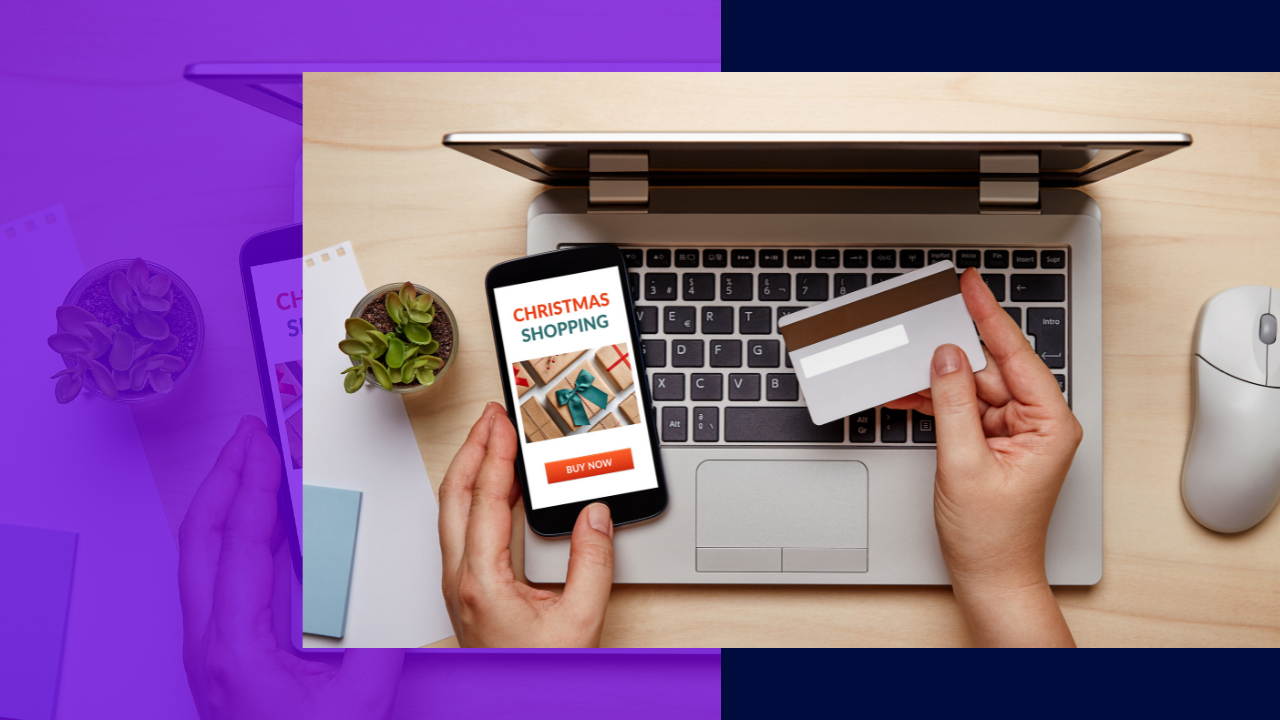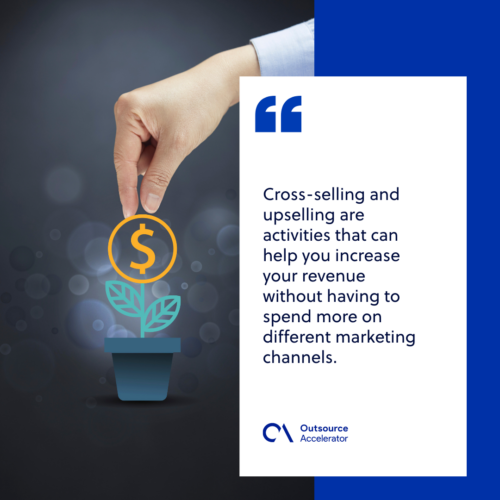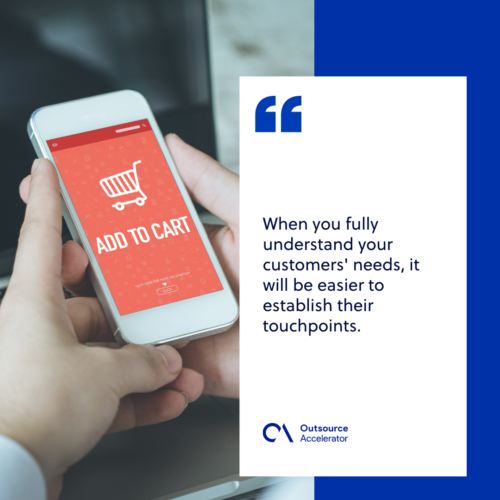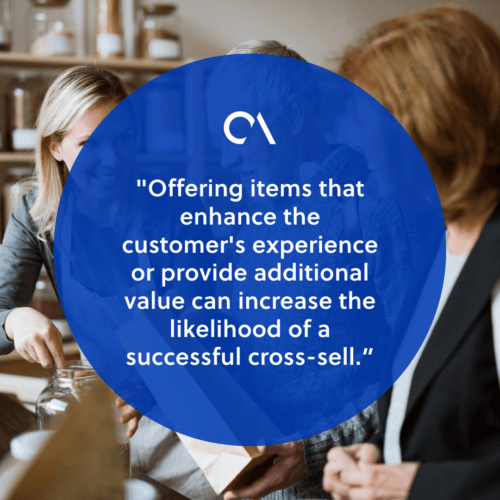Best practices for cross-selling and upselling your products and services

Your income generation does not just stop once you have closed some sales with your customers.
Keep in mind that your existing customers are likely to buy more than your target prospects.
You always have the opportunity to acquire additional sales on top of your customers’ initial purchases. And this is by cross-selling and upselling more of your offered products and services.
These two techniques are crucial to boosting your sales figures, but how can you incorporate them into your strategies? Here’s all you need to know.
Cross-selling vs. Upselling: What are the differences?
Cross-selling and upselling are activities that can help you increase your revenue without having to spend more on different marketing channels.
In most cases, these two sales strategies are used interchangeably. But they have their differences and, at the same time, offer distinct advantages for your business growth.

Cross-selling
Cross-selling efforts involve selling additional products or services aligned with what a particular customer has already purchased.
One common cross selling examples is, a gadget store sales representative suggests buying items like a power bank or a headset to a customer purchasing a new phone.
Understanding customer preferences helps create targeted offers, boosting transaction value and improving the customer experience with valuable recommendations.
Upselling
On the other hand, upselling aims to encourage customers to spend more by offering an upgraded version of what they are opting to buy.
While cross-selling typically occurs business-to-consumer, upselling can also apply to business-to-business transactions.
One example is when an online tool can be used for free but only for its essential features. Upgrading to the premium plan will unlock additional and better features but require a monthly or yearly subscription fee.
By highlighting added value of pricier product/service, businesses encourage larger purchases. Effective when personalized to address customer needs/preferences.
Understanding the value of existing customers
One of the biggest mistakes businesses make is focusing all their efforts on acquiring new customers while neglecting the ones they already have.
However, existing customers are a goldmine of opportunity.
Not only are they easier and less expensive to sell to, but they are also more likely to make repeat purchases and refer your business to others.
In fact, studies show that it costs five times more to acquire a new customer than to retain an existing one.
Recognizing the significance of customer purchases, businesses can cultivate long-term relationships, foster loyalty, and ultimately drive revenue growth.
Benefits of cross-selling and upselling
Implementing cross-selling and upselling strategies can offer several benefits to businesses:
Increased revenue
Businesses can effectively encourage customers to purchase additional products or upgrade to higher-end options through cross-selling and upselling practices.
If done successfuly, these methods boost their sales revenue significantly.
Enhanced customer experience
Offering personalized recommendations based on customer preferences lets businesses provide added value and improve the overall shopping experience.
Customers appreciate when businesses anticipate their needs and provide tailored solutions that enhance their overall experience.
Relevant and helpful product recommendations improve customer satisfaction and loyalty.
Improved customer retention
Businesses can foster stronger relationships and enhance customer loyalty by demonstrating a commitment to meeting customer needs and preferences.
Integrating cross-selling and upselling into the customer journey can create a win-win situation for both businesses and their customers, fostering loyalty and driving growth.
Cross-selling and upselling best practices
In the realm of cross-selling and upselling best practices, embracing a professional approach can greatly enhance the overall customer experience and lead to improved customer satisfaction.
To help you master the art of cross-selling and upselling, follow these best practices:
Highlight the value of your products and services
First, you need to determine your customers’ pain points. Then, consider how your products and services complement one another.
From there, emphasize how the value of their purchase will improve if they buy your additional offerings.
When you fully understand your customers’ needs, it will be easier to establish their touchpoints. In turn, your cross-selling and upselling offers are more likely to succeed.
Personalized offers
Customers today expect more personalized offers from their chosen brands, too.
Fine-tune your customer engagement by encouraging them to interact with your brand using your social media channels.
Collect as much information as possible through your customer reviews, feedback, and your analytics. Use what you have gathered to create your customer personas and base your personalized offers accordingly.
Know the right timing to make an offer
You can consistently cross-sell and upsell before and after your customers have placed their orders. You just need to determine the right timing.
Before the purchase
Here are two examples of situations where you can cross-sell or upsell before your customers make their first purchase:
- When customers add an item to their cart, show them other possible add-ons that complement what’s in their shopping cart.
- For customers who go through your specific product’s landing page, showcase how upgrading to a premium plan can benefit them.
Sometimes, it can be quite hard to cross-sell and upsell once your customers have made their purchases.
In most cases, they may ignore all your cross-selling and upselling activities. So showing cart upsell products and cross-sell should be done wisely.

After the purchase
The key here is to actively make an effort to get them back to your brand.
Here are two examples where it’s best to cross-sell and upsell after your customers have completed their orders:
- Take advantage of social media and use targeted campaigns for your followers who have purchased something from your brand.
- Another way is to create email campaigns to be sent to your customers after spending some time with their purchased product or service.
Whether you are cross-selling or upselling before or after your customers’ purchase, it is highly recommended to utilize FOMO marketing.
Research shows that the fear of missing out (FOMO) happens to 56% of social media users, especially to 69% of millennials. A significant portion of cross-selling and upselling purchases are outcomes of FOMO.
Developing a successful upselling and cross-selling strategy
To develop a successful upselling and cross-selling strategy, businesses need to understand their customers’ needs and preferences, identify relevant products or services to offer, and implement effective sales techniques.
Here are some key steps to consider when creating an upselling and cross-selling strategy:
Understand your customers
Take the time to analyze your customer data and identify purchasing patterns, preferences, and behaviors.
By gaining a deeper understanding of your customers, you can tailor your cross-selling offers to meet their specific needs and interests.
Identify relevant products or services
Determine which products or services are complementary to the customer’s initial purchase.
Offering items that enhance the customer’s experience or provide additional value can increase the likelihood of a successful cross-sell.

Train your sales team
Provide your sales team with the necessary training and resources to cross-sell to customers effectively.
Teach them how to identify cross-selling opportunities, communicate the benefits of additional products or services, and overcome objections.
Utilize technology
Implement technology solutions, such as customer relationship management (CRM) systems or sales automation tools, to track customer interactions, monitor purchasing behavior, and identify cross-selling opportunities.
By leveraging technology, businesses can streamline the cross-selling process and improve sales effectiveness.
Offer incentives
Provide incentives such as discounts, free trials, or exclusive offers to sweeten the deal and encourage customers to take advantage of the upsell opportunity.
Offshore cross-selling and upselling specialists through Outsourced!
Seal the success of your sales strategies with Outsourced! Hire today’s cross-selling and upselling specialists who will function as an extension of your sales team.
Contact Outsourced today to get started!







 Independent
Independent




